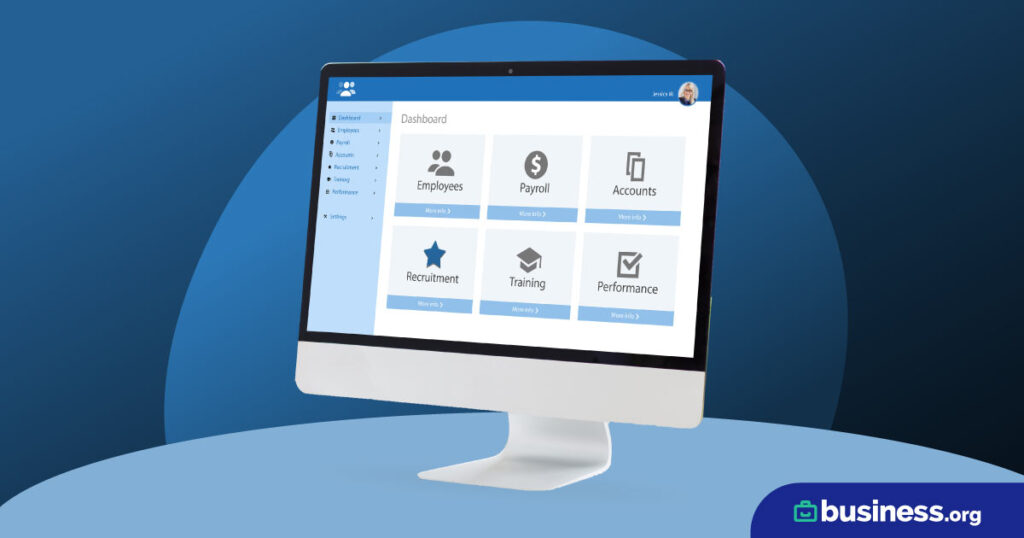We are committed to sharing unbiased reviews. Some of the links on our site are from our partners who compensate us. Read our editorial guidelines and advertising disclosure.
How to Read a Financial Statement
Interested in playing the stock market? You're not alone: around 55% of US citizens own stock in a publicly traded company.1 But out of the thousands of companies on the New York Stock Exchange, which one offers the best investment?
Publications like U.S. News, Forbes, and Investopedia recommend stocks to invest in each month. But while you should definitely take professional stock recommendations into account, it's best to read a company's financial documents yourself before putting any money into their business. Below, we explain how to understand the financial documents that are required reading for any investor.
How to read financial statements
Income statements (profit and loss statements)
An income statement showcases a business's profitability over a specific time period, usually over the course of a fiscal year. You might also hear income statements referred to as profit and loss (P&L) statements, statements of earnings, or statements of operations.
Revenue and profit
At the top, the statement breaks the company's revenue down by source—for most businesses, that means the sales of goods, services, or both. A detailed statement lists revenue by month as well, showing you not just how the company earns income but when the business is most profitable. The revenue section ends by totaling each source of income to show the company's net profit.
Direct costs
The next section lists the company's direct costs, or costs of goods sold (COGS), which covers all costs that stem directly from creating and selling a product. For instance, a tech company's COGS would include the cost of manufacturing each component of a phone, computer, or tablet, from the screen to the keyboard. The section ends by totaling the direct costs, which are subtracted from the net profit to calculate a company's gross profit.
Gross profit vs. gross profit margin
A company's gross profit shows, in dollar amount, how much a company earns from product sales after accounting for the direct costs of product production. The gross profit margin isn't usually listed on the statement itself, so you'll likely need to calculate the percentage yourself. The formula for gross profit is as follows:
gross profit = revenue – direct costs
In contrast, the gross profit margin represents a company's gross profit as a percentage point. The formula for gross profit margin looks like this:
gross profit margin = (revenue – direct costs)/revenue
The higher the gross profit margin, the more a company is making on each sale. To understand a company's profitability, you need to look at both numbers—a business might have a positive gross profit but a low profit margin, which could mean the company is neither efficient nor particularly profitable.
Indirect expenses
After the gross profit, you'll see a list of the company's indirect expenses, or non-production costs. These expenses could include the following:
- Operating expenses (OPEX)
- Selling, general, and administrative expenses (SG&A)
- Research and development expenses (R&D)
Businesses should also list their interest expense, or the money they pay on loans, and interest income, or the money they earn from interest-bearing business bank accounts. A company also lists how much it pays in income taxes.
Bottom line
The statement then (at last!) tallies up the expenses, which are subtracted from the gross profit to show you the net profit, a.k.a. the bottom line. If the company is losing money, it lists a net loss instead.
Finally—you're nearing the end of this statement, we promise—the P&L report should list the company's earnings per share (EPS). That's the amount each shareholder would make per share of stock if the company paid out all its net earnings today.
Balance sheets
A balance sheet covers three essential financial categories: a business's assets, liabilities, and equity.
- A company's assets include both its revenue and the amount it would earn from liquidating physical assets like machinery, property, and excess inventory. Assets also include the company's copyrights, investments, and earned interest.
- A company's liabilities include whatever it owes to non-shareholders. The amount could include loans, unpaid wages, income taxes, rent, and interest payments.
- A company's shareholder equity refers to what its shareholders would earn after the company liquidated its assets and paid all its bills.
A balance sheet lists the company's assets on one side (usually the left half) and its liabilities and equity on the other (usually the right half). The two halves of the sheet must equal each other for the sheet to be balanced.
The asset side of the sheet lists assets by how quickly they could be liquidated, starting with current assets like cash and inventory. Current assets also include anything that could either be liquidated or yield returns within a year, such as short-term investments and accounts receivable.
The sheet then lists non-current assets like long-term investments, intangible assets like copyrights, and fixed assets that would take over a year to sell and liquidate—for instance, warehouses or heavy machinery necessary to daily operations.
The liability side of the sheet lists liabilities by how soon each payment is due, starting with current liabilities that are due within a year. Long-term liabilities, which come due more than a year after the balance sheet is created, are listed next.
Shareholders' equity is listed beneath liabilities on the same side of the sheet. This section includes retained earnings, which is income the company reinvests for growth and uses to pay down debt. It should also show the stock invested in the company.
By signing up I agree to the Terms of Use and Privacy Policy.
Cash flow statements
A cash flow statement (or statement of cash flows, if you're feeling fancy) shows how much cash is moving into and out of a business—plus where that cash is going. So while a balance sheet lists a company's assets and an income statement reports on its profitability, a cash flow statement indicates if a business is earning money and allocating that money wisely.
Cash flow statements include three main sections:
- Cash flow from operating activities. This section of the statement compares the income statement's net profit to the amount of cash you put into (and get out of) daily operations, such as sales and wages.
- Cash flow from investing activities. This section includes cash earned from a company's investment portfolio as well as long-term investments in a business's future, such as cash payments for property or new equipment. These types of investments are also called capital expenditures, or the money businesses reinvest in their own physical assets.
- Cash flow from financing activities. Shareholders' equity is listed in this section, as are payments a company makes to a financial institution like a bank.
If more cash is flowing into a business than out of it, the company has a positive cash flow, which often indicates the business is flourishing (and thus represents a good investment opportunity). If the business is losing more money than it's earning, it has a negative cash flow, and the business owners need to make some key changes if they want to get investors on board.
Statements of shareholders' equity
The statement of shareholders' (or stockholders') equity demonstrates if shareholders' equity went up or down over a given time period—which is why you might also see this statement referred to as a statement of changes in stockholders' equity. It's typically included as part of the balance sheet, but it's important enough to stockholders to merit its own close reading.
The sheet breaks down equity by type and amount, including common stock, treasury stock, and retained earnings. It also lists the beginning and ending balances for each type of equity over a given time period—which means you should see if stockholders are getting a good return on their investment or not.
- Common stock, or stock that includes voting privileges in a company's decisions
- Preferred stock, or stock that is paid out to stockholders before common stock is
- Treasury stock, or stock a company repurchases
Footnote disclosures
Footnote disclosures aren't separate financial documents. They're sections found at the end of the financial statements that contextualize the company's numbers.
In particular, footnotes spell out the company's accounting practices to help explain how the company arrived at the numbers it did. And the notes might also list additional financial information like the company's deferred income tax payments, pension plan funding, and employee stock options.
It's tempting to skip the fine print (after all, we do it all the time with phone agreements and internet contracts), but it's absolutely essential to read financial documents' footnotes. Numbers alone can't give you the full story, and the context the footnotes provide can help you decide how trustworthy, ethical, and up-front a company's accounting practices are.
Compare the year's best accounting software
Data as of 3/9/23. Offers and availability may vary by location and are subject to change.
*Only available for businesses with an annual revenue beneath $50K USD
**Current offer: 90% off for 3 mos. or 30-day free trial
†Current offer: 50% off for three months or 30-day free trial
‡Current offer: 75% off for 3 mos. Available for new customers only
FAQ
What are the four basic financial statements?
The four main financial statements investors should read include income statements, balance sheets, cash flow statements, and statements of shareholders' equity. If you're a business owner, you should also know how to prepare and read these four statements: they'll show you and your potential investors how healthy your business is.
Which financial statement is the most important?
In terms of charting a company's growth, profit, and fiscal health, the balance sheet and income statement are the most important financial statements for business owners and potential investors alike. If we had to choose just one of the two, we'd probably say the balance sheet—seeing a snapshot of a company's assets, liabilities, and equity is crucial to determining its financial viability.
However, all four financial statements work together to show you different parts of a business's financial health. For example, an income statement shows you a profit margin, but it doesn't list the ready cash the company has on hand—you need a cash flow statement for that information. Looking at all of the statements together is the only way to really get a handle on a business's finances.
How do you analyze a financial statement?
Reading a financial statement is the first step in analyzing a company's financials and deciding whether investing is a good idea. After you read each statement (and its footnotes), you should be able to pull out key numbers to generate financial ratios. From an investing perspective, these ratios are the best indicator of a company's financial health.
These financial ratios aren't spelled out clearly in the financial statements themselves—you have to do the legwork yourself. Important ratios can differ from industry to industry, so you should check with an accountant to learn more about which financial ratios you should pay most attention to. If you want to try your hand at ratio calculations yourself, the U.S. Securities and Exchange Commission has a useful list of basic financial ratios and how to calculate them.
The takeaway
When you know how to read financial statements, you don't have to rely on others' advice about the best stocks and companies—you can figure it out for yourself.
And if you're a small-business owner, understanding how to read your own financial statements doesn't just encourage investors to give you a try: it also gives you the data you need to make your business more profitable.
Want to attract your own investors? Check out our list of the year's best accounting software for small businesses. Our top picks generate key financial statements in a jiffy.
Disclaimer
At Business.org, our research is meant to offer general product and service recommendations. We don't guarantee that our suggestions will work best for each individual or business, so consider your unique needs when choosing products and services.
Sources
1. Gallup, "What Percentage of Americans Owns Stock?"





